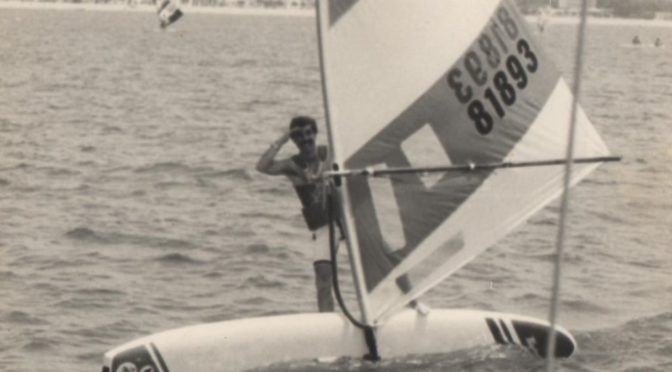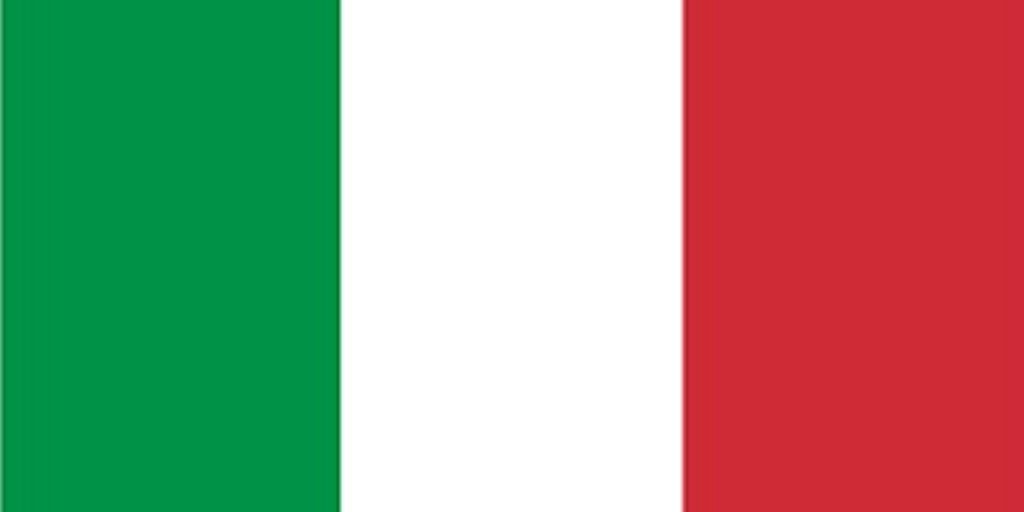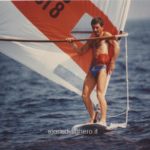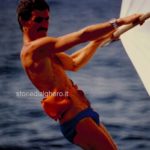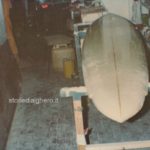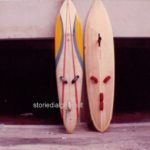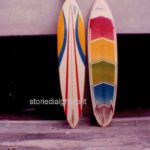Windsurf is for sure a sport of the previous century. One of the first handcrafted “board” was put in the water in Perth (Australia) in the 40’s buy a boy named Richard Eastaugh, who built a prototype using an old kayak, bamboo boom and sails.
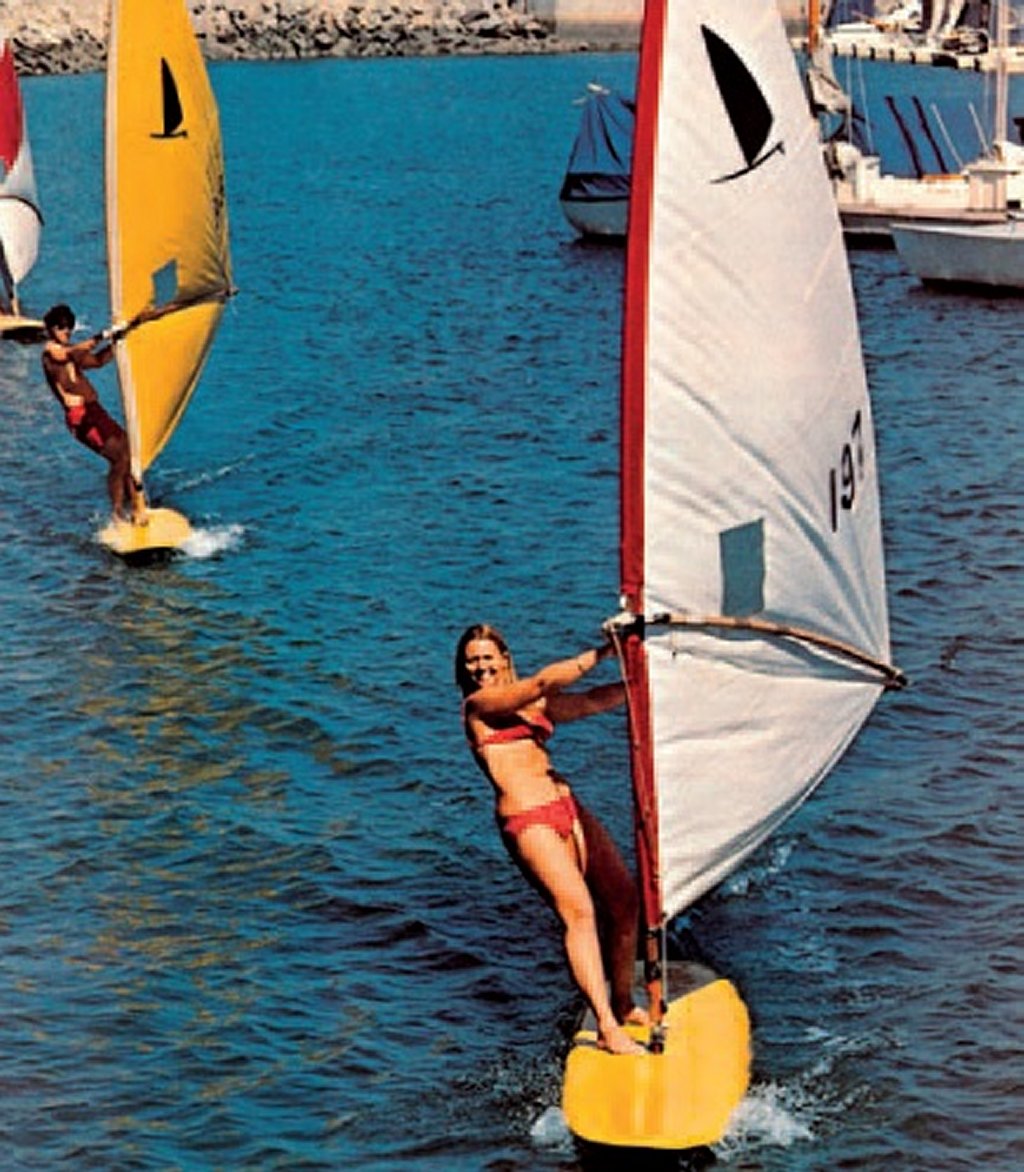
The birth of the windsurf is intertwined with the story of two Californian surfer friends, Hoyle Schweitzer and Jim Drake, who, in 1967, patented the idea. The first boards production achieved success mainly in the Malibu area, but then it was Europe who led this sport to a major fame.
Some Dutch friends were on holiday in California, they saw a strange board in the sea and decided to buy it. In 1973, a Dutch company called “Ten Cate” obtained the licence to build them in Europe.
The windsurf evolution was fast: in the 70’s the gears were heavy and not easy to handle, it was almost impossible to plane on the water. In the second half of the 80’s the windsurf, completely transformed, has become much more manoeuvrable, with detached sails, hidden drop keel and lighter boards.
Windsurf has been a great success among the young people all over the world. In Alghero, one of the pioneers of this sport was Gian Mario Catta who will now tell us his… story of Alghero.
Carmelo Murgia
The first windsurf in Alghero
by Gian Mario Catta
In 1977 in occasion of the Italian Flying Dutchman Championship, organised by the yacht club of Alghero, me and some other participants decided to go to Baia Sardinia to watch the Windsurf World Championship. In front of us, a wonderful performance: hundreds of colourful sails speeding on the water, driven forward by the strong wind. We were blown away by the athletes that, despite the steady wind, would never fall down from the surfboard.
I was asking information around and I found out that the majority of the competitors were Americans and that they would have sold their used boards after the tournament. I was both attracted and fascinated by this new sport and so I decided to buy one and bring it to the Yacht Club Alghero Office. The day after I came to know that Giorgio Maggioni owned another one, he bought it from another contestant at the Flying Dutchman.
From that day on, every afternoon, I put the board on the water, every time I tried to get on top of the surfboard I fell over, stubbornly I went up and down without moving forward. Unfortunately, during those years it was impossible to find books or magazines that would explain the mode of operation of that evil equipment.
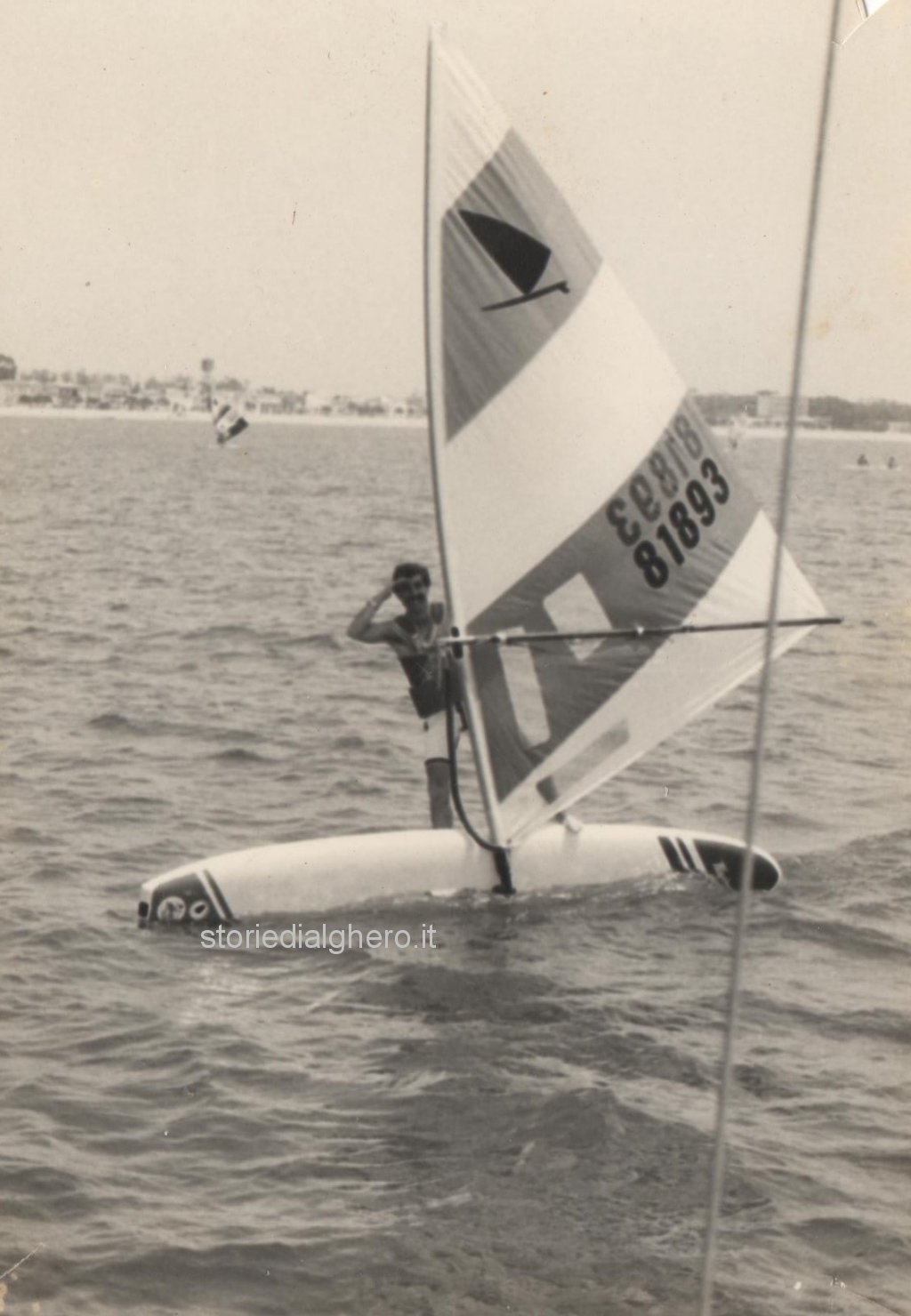
All the people passing through the port stopped by, intrigued by the new thing, they observed everything I would do and laughed at each one of my falls. My closest friends, comfortably sitting in their cars with their girlfriends, were clapping at my clumsy movements. One fine windless day (after a month of attempts), I managed to lift up the sail and, finally, I started to go a few meters forward. I was starting to understand how the luff and the haul worked and, above all, how to go back to the seaport. Everything was very hard and complicated. After learning the principles, I met with Maggioni to try some small boards inside the port, that has been possible because there were no floating wharf yet and we were free to move around. The number of people who went surfboarding raised with the time. We joined the first regattas in Cagliari, where surfers were many already. The ones from Cagliari were better than us from Alghero, but Giorgio Maggioni and I managed just fine and in a short period of time we started to obtain some important outcome on the ranking lists.
Due to its success, several sailors got passionate about this new sport. Therefore, it has been possible to form a nice group: Enzo Favata, Luigi Altea, Roberto Sanna, Antonello Porcheddu, Seppe Ruggiu, Lello Monti, Sergio Pirisi, Gennaro Dessi, Gino Catta, Marco Ciccarella and others. In Cagliari, after a while, the windsurf association class was arranged with all its categories: light, heavy, women. A few regional and national regattas were organised. The strongest among the surfers from Cagliari were: Loi, Diaz, Strazzera, Loviselli, Brianda, Olivari, Gigi Barrella, etc.
In 1979 in Stintino, the two surfers from Alghero Maggioni e G. M. Catta ranked in the top five in the Italian Windsurf Championship. During May 1981 I organised an international windsurf regatta in Alghero. Many athletes of the Baia Sardinia World Championship took part, 46 competitors in total. In that occasion, Nicolò Olivari from Cagliari won the regatta, second the French Bogossian, third place to the Japanese Hideki Miei and I followed in fourth position. In the following years, several regional and national championship took place, where the athletes from Alghero were always on the podium.
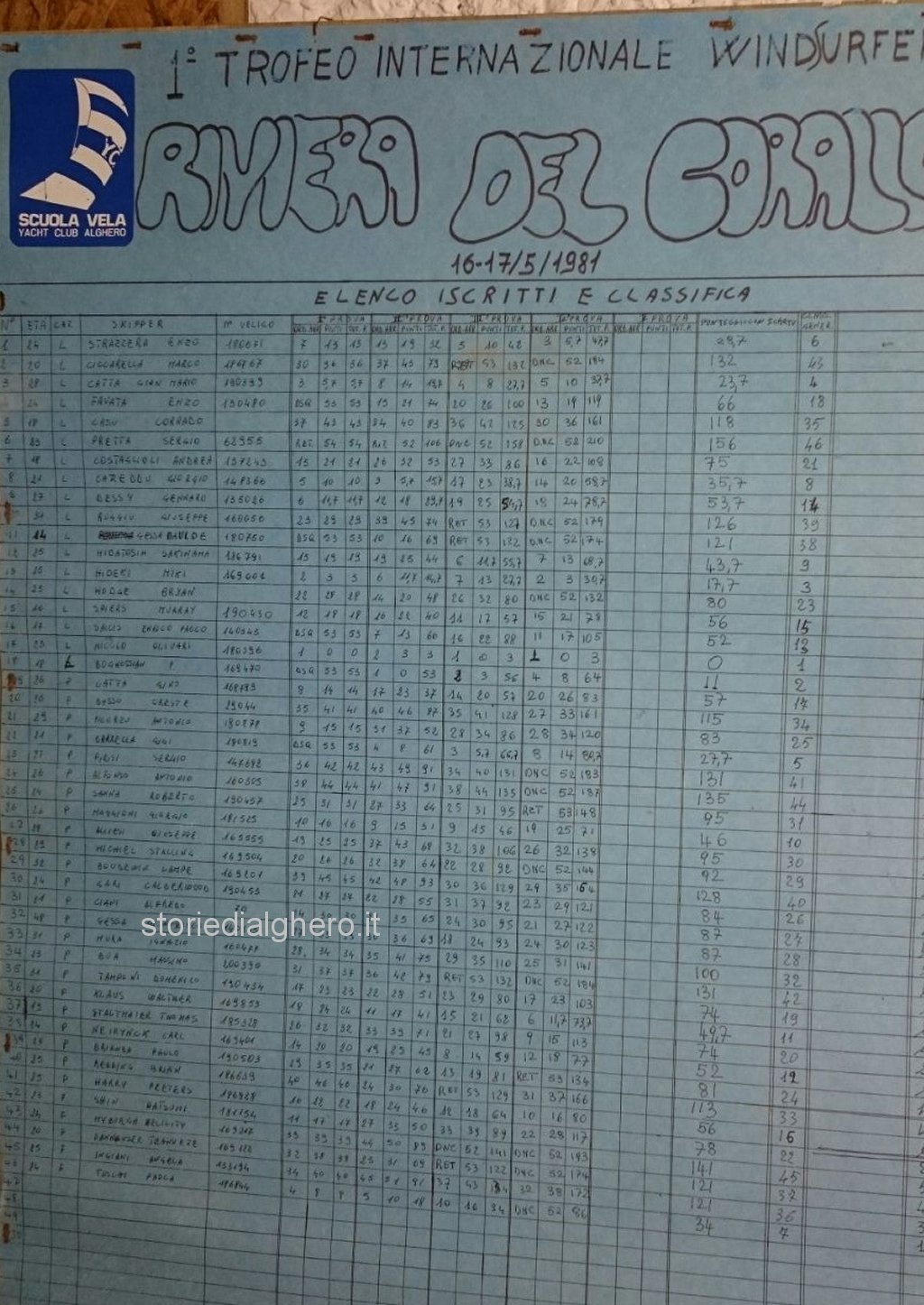
After the Windsurfer Class success, many other started off: the Mistral class, the Windglaider class and so on. Windsurf, though, was the first and the funniest one and still today it’s highly practiced by many enthusiasts.
Later there was the technical revolution of the custom board that surfers were used to build by hand in their garage, boards that would not go beyond the two meters and a half-length.
Being short and light, they were very fast and at every fall, someone needed a good technique to restart.
Nowadays in our sea, you can observe a radical change, not only high performance windsurf, but small and light board with a kite called Kitesurf… but this is another story.
Gian Mario Catta
English version: Francesca Sanna
